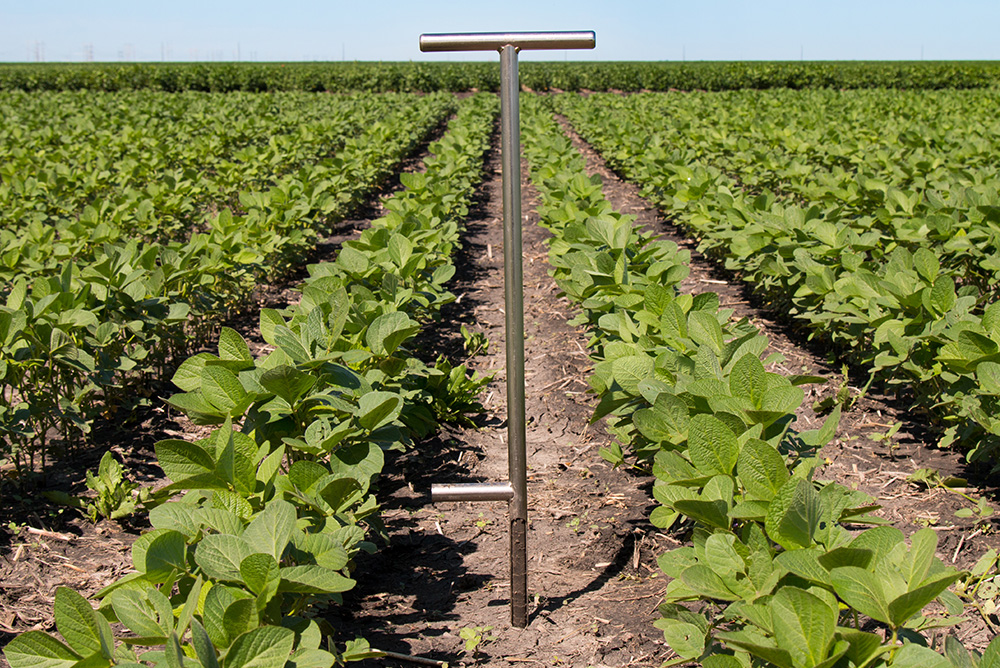
What you need to know about pre-season soil sampling
With Canadian growers spending over $4 Billion annually on fertilizer, pre-season soil sampling ensures decisions around nutrient investments are based on the best information available, rather than guesswork. Today’s soil tests go far beyond measuring nutrients and can provide insights on soil health – which can help you develop a comprehensive input and management strategy.
Ahead of the spring soil sampling season, we’ll touch on the various insights you can gain from your test results.
For an in-depth description, DOWNLOAD The Taurus Soil Test Interpretation Guide – a FREE 15-page resource designed to explain the results and meanings behind soil test findings.
What can you learn from your soil sample?
Physical and chemical properties
This provides a quick overview of the native makeup of the soil, including organic matter, pH, cation exchange capacity (CEC, which reflects the soil’s ability to hold and release nutrients) and ENR (estimated nitrogen release). From this information, you can determine the soil’s capacity to hold water, produce nitrogen and much more.
Nitrogen considerations
Determining the availability of nitrogen in a certain year is challenging due to a constant change in its chemical properties and its volatility in the soil. A number of factors come into play, including organic matter, CEC, previous crop, intended crop, time of sampling, whether or not manure has been applied and moisture conditions. The optimum range will typically vary by crop. A nitrate/nitrogen test is conducted at depths of one to three feet.
Most labs test for nitrates as a measure of nitrogen availability. Others will look at multiple indicators to create a clearer picture, such as the ENR (estimated nitrogen release) calculation. Including organic matter within the calculation can provide more accurate results, as it gives a sense of the soil’s holding capacity. Knowing CEC is valuable in determining how nitrogen will behave under wet conditions – and whether leaching or denitrification may be a concern. All of this information will help inform nitrogen recommendations.
Sulphur considerations
Sulphur is perhaps the most difficult nutrient to measure, as it is available in many forms (not all of which are plant available). Optimum levels are at least 25 lb/acre for normal crop production (although specific amounts vary by crop). A low result in one sample area generally indicates the entire field will have a deficiency. Yet a high number on one sample may not be representative of the entire field. Other indicators that can enhance knowledge include sodium level, N:S ratio, soluble salts, CEC and EC.
Phosphorus considerations
There are a few ways to test for phosphorus levels and a variety of extraction methods available. Bicarb and Bray P1 tests are two common indicators. Good crops can be grown in soils with lower phosphorus levels, but are more susceptible in adverse years. Other factors that affect availability are pH (6-7 is best) and % saturation.
Base saturation provides an overview of cations in the soil and can help determine the availability of potassium, as can a test for K/Mg ratios.
Cations
Cations are the positively charged elements (such as potassium, magnesium and calcium) responsible for holding the negatively charged soil together. Understanding cation levels can be used to identify a number of potential problems.
Micronutrients
While micronutrient testing isn’t usually part of a standard soil testing package, the ability to identify and address micronutrient deficiencies is essential for a top producing crop. Certain crops have a higher demand for specific micronutrients than others:
- Copper – Cereals, flax
- Zinc – Corn, flax, beans, potatoes
- Manganese – Oats, barley, peas
- Boron – Canola, peas, potatoes, sunflowers
Measuring beneficial microbe levels
New soil health tests are being introduced to determine the levels of beneficial microorganisms in the soil. These tests can accurately differentiate between desirable microbes and other microbes present. This can inform a decision to introduce a biological inoculant or nutrients that can support symbiotic organisms.
The more in-depth the test, the better the recommendations.
The ultimate objective is to use the findings of your soil test to develop a recommendation that will help you maximize production. An agronomist can work with the soil test results to provide you with a solid game plan moving forward. The more indicators they have to guide their decisions, the greater their ability to provide accurate, fact-based recommendations.

